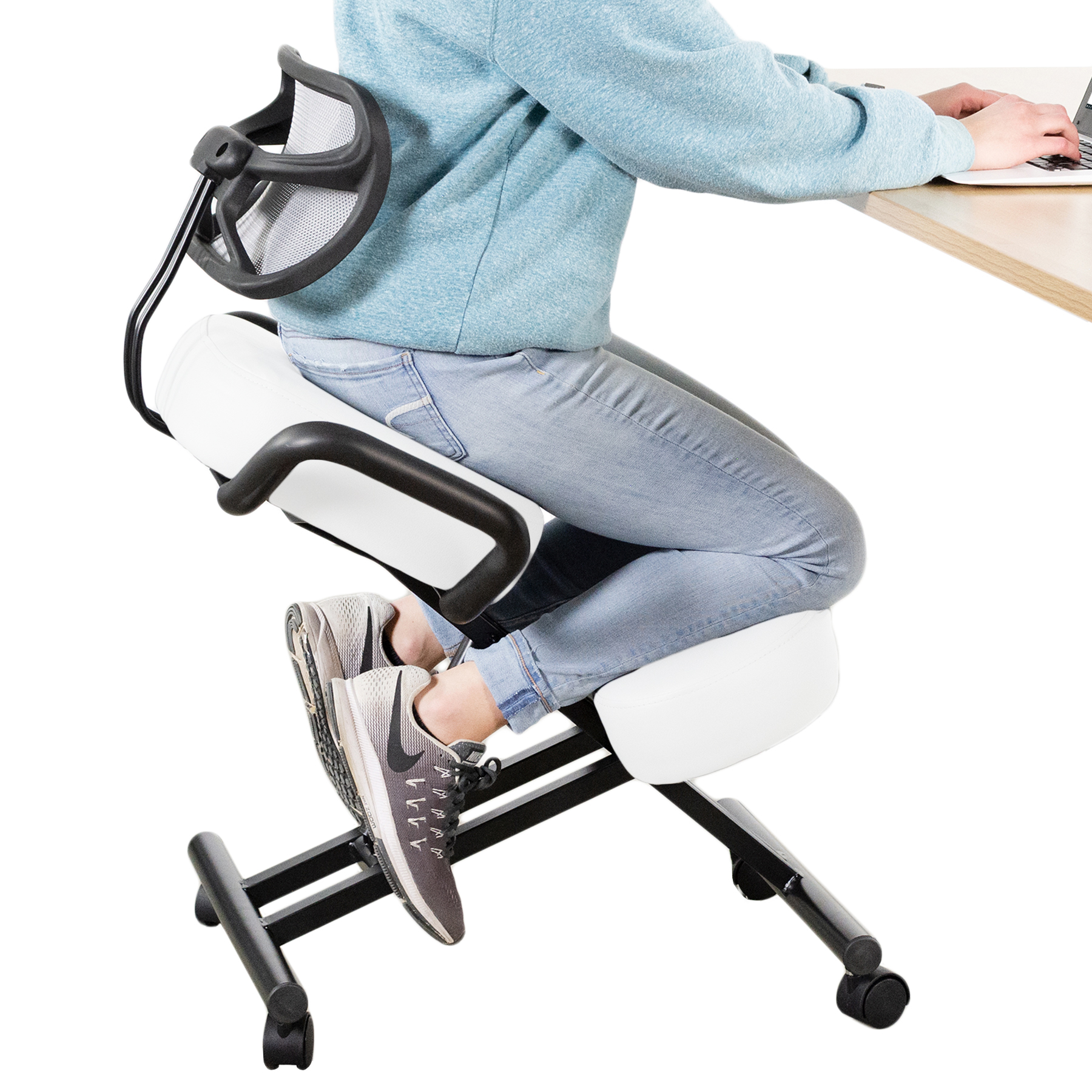Ergonomic Considerations for Upper Back Support in Desk Chairs: Desk Chair Upper Back Support

Proper upper back support is crucial for maintaining good posture and preventing discomfort during prolonged sitting. A well-designed desk chair can significantly impact your overall well-being, reducing the risk of back pain and improving productivity. Understanding the ergonomic principles behind chair design allows you to choose and utilize a chair that promotes healthy posture and minimizes strain.
Desk chair upper back support – Maintaining proper posture is essential for minimizing strain on the upper back. Good posture involves keeping your spine aligned naturally, with your shoulders relaxed and your head balanced atop your spine. Slouching, on the other hand, forces your upper back muscles to work harder, leading to fatigue, pain, and potential long-term problems. A desk chair with adequate lumbar support helps maintain the natural curvature of your spine, promoting proper posture and reducing the strain on your upper back muscles. This support acts as a counterbalance to the forces that encourage slouching, allowing your back muscles to relax and reducing the likelihood of pain and discomfort.
Chair Features Contributing to Upper Back Support, Desk chair upper back support
Several key features in desk chairs directly contribute to ergonomic support for the upper back. Adjustable height allows you to position the chair so your feet are flat on the floor and your thighs are parallel to the ground. This alignment reduces strain on your lower back, which indirectly improves upper back posture by preventing compensatory adjustments. Armrests, when properly positioned, can provide support for your arms and shoulders, relieving pressure on your neck and upper back. They prevent you from hunching forward to reach your keyboard or mouse. Headrests, though often overlooked, can be beneficial for those who sit for extended periods. They offer support for the head and neck, promoting a neutral spine alignment and reducing the strain on the upper back and neck muscles. A chair that offers all these adjustable features allows for personalized support, ensuring that the chair adapts to the individual’s body rather than the other way around. For example, a person with a longer torso might benefit greatly from an adjustable headrest, while someone with shorter arms might find adjustable armrests particularly helpful.
Exercise Routine for Improved Posture and Upper Back Pain Relief
Regular exercise can significantly improve posture and alleviate upper back pain. The following simple routine can be performed daily to strengthen core muscles and improve flexibility:
This routine focuses on strengthening muscles that support good posture and increasing flexibility in the areas that tend to become tight with prolonged sitting. Consistency is key; even a few minutes each day can make a significant difference over time.
- Shoulder Blade Squeezes: Sit upright, squeeze your shoulder blades together, hold for 5 seconds, and release. Repeat 10-15 times. This exercise strengthens the muscles between your shoulder blades, improving posture.
- Chin Tucks: Gently pull your chin back towards your neck, hold for 5 seconds, and release. Repeat 10-15 times. This exercise strengthens neck muscles and improves head posture.
- Chest Stretches: Clasp your hands behind your back and gently straighten your arms, feeling a stretch in your chest. Hold for 30 seconds. Repeat 2-3 times. This counteracts the hunching that often occurs with prolonged sitting.
- Upper Back Rotations: Sit upright and gently rotate your upper body in a circular motion, first clockwise and then counterclockwise. Repeat 10 times in each direction. This increases flexibility and range of motion in the upper back.
- Cat-Cow Stretch (modified for sitting): Sit upright with your hands on your thighs. Inhale, arch your back slightly, and lift your chest. Exhale, round your back and tuck your chin towards your chest. Repeat 10-15 times. This gentle stretch improves spinal flexibility.
